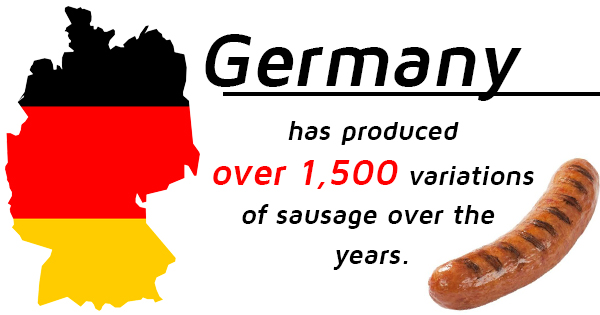Mar 14th 2018
Around the Wurst in 80 Ways: A Circumnavigation of German Sausages

We had to go for the pun, but apparently, the Germans have the best meat grinders on earth because there are over 1,500 different variations of sausage from Germany. Every country specializes in some sort of food. Interestingly enough, the United States seems to specialize in Mexican food, with Mexican restaurants and taquerias outnumbering Italian and Chinese restaurants, chicken rotisseries, and seafood joints combined. Mexican food and U.S. restaurants aside, there are so many delectable sausages to be had. But, where do we start?
Before we wade waist deep in wurst, there are some essential proteins to be gleaned from the commercial grade meat grinder that is Germany. Since this is the initial foray, we'll look at some familiar sausages, so you'll be able to better navigate some of the more common fare at your local German spot.
Bratwurst
You've heard it before and we're here to tell you the simple truth. In Germany, this is the umbrella term for any type of cooked sausage placed in a bun. Brat translates to finely chopped meat and wurst translates to sausage. Finely chopped meat sausage is typically grilled, and it's one of the most popular snacks from street vendors across the country with recipes varying by region.
Weisswurst
Don't judge a sausage by its cover, especially in this casing. This white-ish sausage is made from veal and bacon inside a pork casing. A popular tale tells that a German innkeeper ran out of bratwurst casings and had to resort to pork casings. He was worried they'd be ruined on the grill, so he chose to boil them and they swiftly became a huge hit.
Frankfurter Wurstchen
Germany might have the best meat grinders, but the Frankfurter has traveled a long way. Wurstchen, meaning little sausage, was originally made in Germany and Austria consisting of a mixture of pork and beef. They're commonly referred to as weiners and were usually served either cold or lightly smoked with sauerkraut and potato salad. They were introduced in the United States around 1900 in 1916 on Coney Island, New York, they became immortalized in American food culture as the hot dog.
The Germans are certainly adept at grinding meat, cutting meat, and creating a delicious delicatessen smorgasbord that could take quite a while to conquer, but we're up for the challenge. Break out the steins, pretzels, and mustard, because it's time to dig into the best of the wurst.
